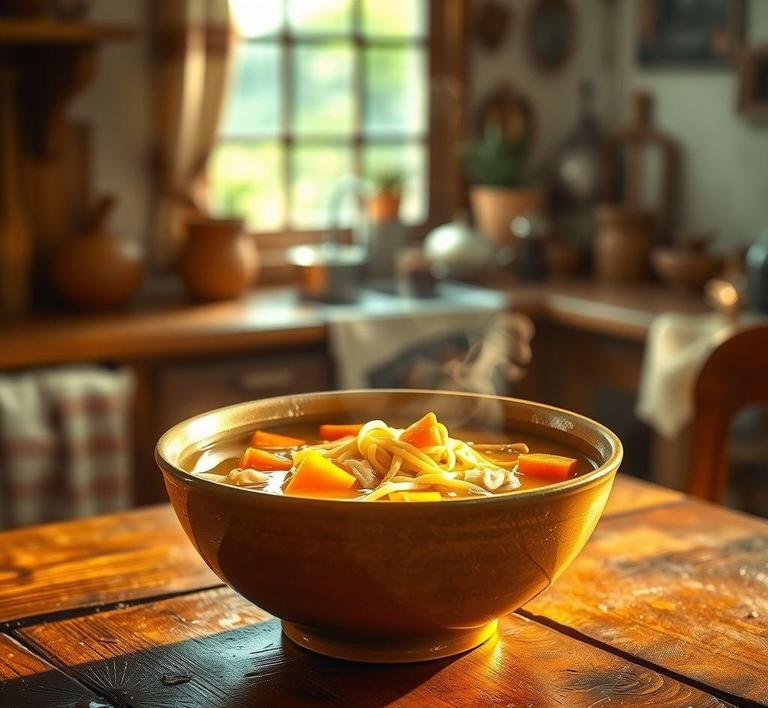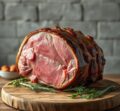If you’ve ever found yourself with leftover chicken noodle soup and wondered whether it’s safe to refreeze, you’re not alone! While freezing and refreezing foods can be a bit tricky, chicken noodle soup is surprisingly versatile when it comes to storage. The key is knowing the right steps to take to ensure both safety and quality. In this guide, we’ll break down everything you need to know-from how to properly store it, to the best practices for refreezing, and what you need to look out for to avoid any texture or taste issues. So, whether you’ve got a big batch of homemade soup or some leftovers from dinner, we’ve got you covered!
Can You Refreeze Chicken Noodle Soup?

When it comes to storing leftovers, especially dishes like chicken noodle soup, many people are faced with the dilemma of whether they can refreeze it after it’s been thawed. The simple answer is yes, you can refreeze chicken noodle soup-but with a few important considerations.
First and foremost, it’s important to understand what happens when food is frozen, thawed, and then frozen again. Freezing food creates ice crystals that rupture the cell walls of the ingredients. This affects the texture and quality of the food, especially once it’s been reheated. The freezing and thawing process doesn’t necessarily make food unsafe to eat as long as it’s handled properly, but it can alter the flavor, texture, and overall appeal of the dish.
Chicken noodle soup, which typically contains vegetables, chicken, noodles, and broth, presents a few challenges when it comes to refreezing. The delicate balance of the ingredients-especially the noodles-can be easily disrupted by multiple cycles of freezing and thawing.
How To Refreeze Chicken Noodle Soup?
If you decide that refreezing your chicken noodle soup is the best option for you, there are a few guidelines to ensure that you do it in the safest and most effective way possible.
- Cool it Quickly: Before you freeze or refreeze chicken noodle soup, it’s essential to cool it down rapidly. This prevents the growth of harmful bacteria that can thrive at room temperature. You can cool it by placing the soup pot in an ice water bath or portioning the soup into smaller containers to speed up the cooling process.
- Use Airtight Containers or Freezer Bags: To protect the soup from freezer burn and to retain its flavor and texture, store the soup in airtight containers or freezer bags. If you’re using containers, make sure they’re sealed tightly to prevent any air from getting in. Freezer bags are also a great option because they allow you to lay them flat in the freezer, which saves space and makes thawing quicker.
- Portion the Soup: If you plan to only use a portion of the soup at a time, it’s a good idea to portion it out before freezing. This way, you won’t have to refreeze large amounts of the soup multiple times, which could degrade its quality.
- Label and Date: Always label your containers or bags with the date the soup was first cooked and frozen. This ensures that you can keep track of how long it has been stored and avoid eating soup that’s past its prime. Chicken noodle soup can typically be stored in the freezer for about 2-3 months without a significant loss in quality.
- Thawing and Reheating: When you’re ready to use your refrozen soup, thaw it in the refrigerator overnight. You can also defrost it in the microwave, but make sure to stir occasionally to ensure even defrosting. After thawing, heat the soup thoroughly to an internal temperature of 165°F (74°C) before serving.
Quality Impact
While you can refreeze chicken noodle soup, it’s important to be aware of the impact on its quality. Each time the soup goes through a freeze-thaw cycle, the texture and flavor can degrade.
- Noodles: Noodles are particularly sensitive to freezing and refreezing. When frozen, they can become mushy or overly soft after being reheated. This is because the starches in the noodles absorb moisture during freezing, causing them to break down once reheated. If you plan to refreeze chicken noodle soup, consider separating the noodles from the soup before freezing, and then adding fresh noodles when reheating. This will help maintain a more desirable texture.
- Chicken: The chicken in the soup may lose some of its juiciness after being refrozen. It can become a bit drier and tougher once reheated, but it is still safe to eat. To preserve the quality of the chicken, consider shredding it into smaller pieces, which can help retain some of the moisture during reheating.
- Broth: The broth, which is typically the backbone of chicken noodle soup, may separate after being frozen and refrozen. The fat may rise to the top, and you may notice a change in the consistency. However, this can usually be remedied by stirring the soup well during reheating to reincorporate the fat and liquids.
- Vegetables: Vegetables in soup may not hold up as well after being frozen multiple times. They can become mushy and lose their vibrant color. If you notice that your vegetables have turned softer after refreezing, don’t be alarmed-they’re still safe to eat, but they may lack the fresh, crisp texture they had when originally cooked.
Refreezing chicken noodle soup is certainly possible, but it does come with some trade-offs. While it is generally safe to refreeze as long as proper handling and storage methods are followed, it’s important to be prepared for changes in texture and flavor. Noodles and vegetables are particularly susceptible to becoming mushy, while the chicken and broth can lose some of their moisture and freshness. For best results, it’s advisable to separate ingredients like noodles before freezing and to consider adding fresh elements when reheating.
If you’re simply looking to preserve leftovers for a later time, refreezing chicken noodle soup can be a convenient option. However, if you’re concerned about maintaining the dish’s original quality, you might want to consider alternatives like refrigerating the soup or enjoying it within a few days of making it.
Ultimately, the choice to refreeze comes down to how much you value convenience versus quality. By following the correct steps and storing your soup properly, you can enjoy your chicken noodle soup even after it’s been frozen multiple times, though it may not taste exactly the same as when it was freshly made.
Is It Safe To Refreeze Chicken Noodle Soup?
Refreezing chicken noodle soup-or any food that has been previously frozen and thawed-can be a tricky subject. The key concerns revolve around food safety, texture, and flavor preservation. From a food safety standpoint, it is generally safe to refreeze chicken noodle soup, as long as it has been thawed properly (i.e., in the fridge or using a microwave) and not left at room temperature for an extended period. However, there are important considerations to keep in mind.
When food is frozen, the low temperatures stop the growth of bacteria. When it is thawed, bacteria can start to multiply, particularly if the soup has been left at an unsafe temperature for more than two hours (or one hour if it’s very warm, like during summer months). If your chicken noodle soup was kept at a safe temperature during thawing-either in the fridge or by using a microwave-you can refreeze it, though with some caveats regarding texture and quality. Refreezing soup may lead to changes in the consistency of the broth and the texture of the noodles, potentially making the soup watery or soggy. The chicken itself could become rubbery as well.
That said, while it is generally safe to refreeze chicken noodle soup, you should assess whether the result is worth the risk of losing some of its original texture and flavor. For best results, consider freezing the soup in smaller portions so you can thaw and reheat only what you need.
Signs That Chicken Noodle Soup Should Not Be Refrozen
There are several indicators that chicken noodle soup should not be refrozen, as doing so could compromise both food safety and the quality of the meal. If you spot any of the following signs, it’s best to discard the soup rather than attempt to refreeze it:
- Off or Sour Smell: If the soup smells rancid or sour after thawing, it’s a clear sign that bacteria may have started to proliferate. Refreezing such soup will not prevent foodborne illness, so it’s safest to throw it away.
- Visible Mold Growth: Any sign of mold in the soup means it’s no longer safe to eat. Mold can appear as fuzzy or discolored spots on the surface, and these can form if the soup has been left in an unsafe temperature range for too long.
- Unusual Texture: While texture changes are common in refrozen soup, if the noodles have turned mushy or the broth has separated into an unappealing, watery liquid with chunks, it may indicate that the soup has undergone bacterial growth or has simply passed its prime. Though not necessarily unsafe, such changes can make the soup unpleasant to eat.
- Temperature Abuse: If the soup was left out at room temperature for more than two hours (or one hour in hot conditions), bacteria could have multiplied to dangerous levels. Refreezing won’t eliminate the bacteria, so it’s best to discard the soup.
- Prolonged Storage: If the soup was stored for an extended period in the fridge before thawing (over 3-4 days), it may not be safe to refreeze. Even if it looks fine, bacterial growth can still happen over time, making refreezing risky.
Common Refreezing Mistakes
When it comes to freezing and refreezing chicken noodle soup, people often make a few common mistakes that can negatively impact both food safety and quality. Here are the key missteps to avoid:
- Improper Thawing: The most common mistake people make is not thawing chicken noodle soup properly. If soup is thawed at room temperature or left out too long, harmful bacteria can multiply rapidly. Always thaw soup in the fridge or use the microwave to ensure safe temperatures during thawing.
- Refreezing Multiple Times: Refreezing soup multiple times leads to an increase in the growth of harmful bacteria and a significant degradation in the texture and flavor of the soup. Each time food is frozen and thawed, its cell structure breaks down more, leading to a mushy, unappetizing texture. Avoid refreezing soup more than once.
- Freezing Noodles and Broth Together in Large Portions: One of the major mistakes people make is freezing their chicken noodle soup in large containers. If you freeze the soup in big portions, it can take longer to thaw, which can lead to unsafe bacteria growth. Additionally, the noodles absorb the liquid from the broth, becoming soggy and mushy when thawed. Instead, freeze the broth and noodles separately for better quality and quicker thawing.
- Using Old Soup for Refreezing: Some people may try to refreeze soup that was already sitting in the fridge for too long before freezing it the first time. If the soup had been stored for a while and was approaching its expiration date before freezing, it’s best not to attempt to refreeze it, as it may not be safe to consume.
- Not Labeling and Dating the Soup: Without proper labeling, it’s easy to forget how long the soup has been frozen. Soups that are kept in the freezer for too long can suffer from freezer burn, affecting the taste and texture. Always label and date containers before freezing them to avoid long-term storage mistakes.
Tips And Tricks
If you’re planning to refreeze chicken noodle soup and want to minimize the risks of texture loss or bacterial growth, here are some tips to help ensure the best results:
- Freeze in Smaller Portions: Instead of freezing an entire batch of soup at once, divide it into smaller, portion-sized containers. This makes it easier to thaw only what you need without having to refreeze leftovers, which can degrade quality.
- Use an Airtight Container: To avoid freezer burn and preserve the flavor, freeze your soup in airtight containers or freezer bags. If using freezer bags, squeeze out as much air as possible before sealing them. This will help prevent the broth from becoming dry or unpleasant.
- Separate Noodles from Broth: If possible, consider freezing the noodles and the broth separately. This will preserve the noodles’ texture and prevent them from becoming overly soggy when thawed and reheated. You can always combine them when reheating.
- Cool Soup Before Freezing: Never freeze hot soup directly after cooking. Always allow the soup to cool to room temperature before freezing. Rapid cooling methods, like placing the soup in an ice water bath or using a cooling rack, can help speed up this process safely.
- Label and Date: As mentioned earlier, always label your containers with the date of freezing. This will help you keep track of how long the soup has been stored and allow you to use it within a reasonable time frame, ideally within 2-3 months for optimal quality.
- Reheat Slowly: When you’re ready to enjoy the refrozen soup, make sure to reheat it slowly and evenly to prevent the noodles from overcooking or becoming too mushy. Heating it over low to medium heat, either on the stove or in the microwave, will help preserve the texture.
Conclusion
Refreezing chicken noodle soup is certainly possible, but it should be done with caution. While it may be safe from a food safety perspective if handled correctly, the texture, flavor, and overall quality of the soup are often compromised after refreezing. By following the right techniques-such as freezing in smaller portions, separating noodles from broth, and properly thawing-you can minimize the negative effects of refreezing. Pay close attention to signs that indicate your soup may no longer be safe to eat, and always aim to avoid common freezing mistakes that could turn a delicious meal into a soggy, unappealing dish. Ultimately, while it’s safe to refreeze chicken noodle soup under the right circumstances, careful handling and a bit of preparation will ensure the best possible outcome every time.


